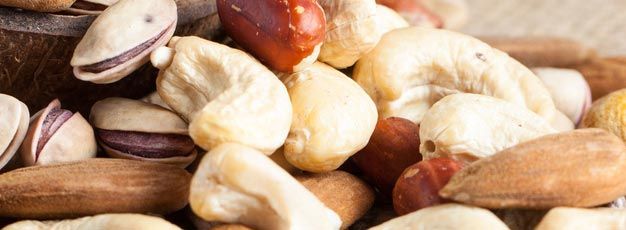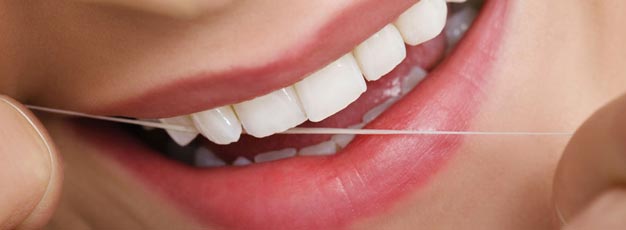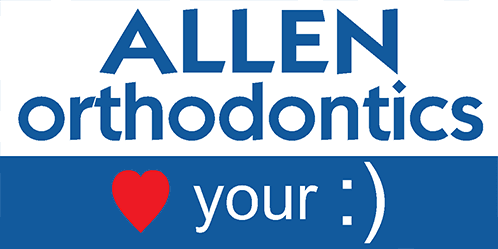Located in Auburn, AL (see our location map below)
ABOUT BRACES
Important Guidelines to Follow When You Have Braces
Complete Orthodontic Treatment
Rely on the professionals at Allen Orthodontics to provide you with the complete information about your orthodontic treatment and the guidelines that you should follow to maintain good oral hygiene. Visit us
today and take advantage of our FREE parking.

Foods That You Should Avoid
There are certain foods that you should avoid while having braces to ensure better and faster results. Hard foods can damage the wires and brackets, and sticky foods might get caught between them. You should also minimize your consumption of sugary foods to help reduce potential tooth decay and keep your teeth healthy.
Some sticky food that you should avoid
- Gum
- Laffy Taffy
- Sugar daddies
- Toffee
- Air heads
- Caramels
- Starburst
Some hard foods that you should avoid
- Ice
- Nuts
- Corn chips
- Doritos
- Hard bread
- Jerky
- Tough meats
- Corn on the cob (must be cut off)
- Whole apples or carrots (unless cut into small pieces)
- Jolly Ranchers
- Pizza crust
Minimize the consumption of sugary foods:
- Cake
- Ice cream
- Cookies
- Pie
- Candy
- Sodas
- Sugary drinks
Maintaining Good Oral Hygiene
Brushing your teeth and flossing regularly is the best way to ensure good oral hygiene. Basic brushing tools such as a soft-bristle brush or a bi-level brush can be effective. We will provide you with a Sonicare toothbrush with your treatment, and the vibration from this toothbrush can help make brushing while having braces easy.
We advise you to brush with a fluoride toothpaste after every meal and before going to bed each night and should brush for at least two minutes each time. You should thoroughly and carefully clean the areas between wires and teeth, and also between the brackets and gums as this is where food particles can easily become trapped.

Special Brushing Tools for Your Convenience
There are some special tools that may help clean your teeth. One is the interdental toothbrush or the proxabrush. It has a small tuft of bristles that stick up all around like a pipe cleaner. Use it gently and carefully to clean the tiny spaces under the wires and also around the bands and brackets.
Another special cleaning tool that can be helpful is a water pik. This device shoots a small stream of pressurized water at your teeth, which can help dislodge bits of food that are trapped between your teeth. It can be very effective when used along with proper brushing and flossing techniques. While it is easy to use, a water pik is not a substitute for a toothbrush or dental floss.

Flossing Fundamentals to Keep Your Teeth and Gums Healthy
To keep your teeth and gums healthy, you need to floss at least once a day. Using a floss threader will make flossing so much easier. Using this device is quite simple: You pull one end of the floss through the threader and then push the threader, carrying with it the free end of the floss, under the archwire. Now grasp the floss on each end and slide it up and down the sides of both teeth and all the way under the gums until you hear a squeaky sound. Finally, pull it out and use a new section of floss for the next area.
Orthodontic Emergencies
You might take some time to get used to the orthodontic appliances placed on your teeth. It is not unusual to experience a bit of soreness after the appliances are first placed or some minor aches as teeth begin moving into their new positions.
If you think you have an orthodontic emergency, the first step is to determine whether it is an urgent situation that requires immediate attention or a minor problem that you can take care of yourself. We do have an after-hours emergency line available for those emergencies that require our attention.
Major orthodontic emergencies
- Trauma or injury to the teeth, face, or mouth
- Infection or swelling of the gums, mouth, or face
- Severe discomfort or pain in these areas
If any of these situations arise, you should seek help from your dentist immediately. He or she is trained to handle a range of dental problems and can most likely offer the necessary diagnostic tools, anesthetics, and treatments that you may need. Severe pain or swelling could be a sign of infection or disease, which a dentist or a periodontist is best able to treat.
Minor orthodontic problems
- Loose or broken brackets, bands, or wires
This problem is often caused by eating hard, sticky candy or food, or playing with the braces. If the band or bracket is still attached to the wire, leave it as is, but don't connect any elastics to it! You can cover it with orthodontic wax if it's irritating the inside of your mouth. If it has come off, save it. Be sure to bring any loose parts with you for the appointment! - Misplaced or poking archwire, bracket, or tie
As the teeth start to move, the wire that connects them (archwire) may begin to poke near the back of the mouth or irritate the cheeks. You can try moving the wire into a better position with a pencil eraser or a Q-Tip. If the wire does not move, you may be able to cut the end off with a nail clipper sterilized in alcohol, but before doing so, please call our office for our guidance or instructions. Often, you can also use tweezers to gently move a misplaced wire or a tie that is causing problems. - General tooth pain or loosening
It is normal for the teeth to become slightly loosened during orthodontic treatment. Sometimes, this movement may be accompanied by tenderness, especially after braces are placed or adjusted. For minor soreness, you can use your regular over-the-counter pain reliever. A twice-a-day salt water rinse may also help.
We aim to make your orthodontic treatment as comfortable as possible. If you have any queries, don't hesitate to call us!
Call us today for a
FREE consultation.
We carry quality products
from brands such as Invisalign, Sonicare,
and 3M Orthodontic.
Our Facebook Feed
Auburn, AL Location
Allen Orthodontics
1234 Ogletree Village Lane
Auburn, AL 36830
334-705-8655
Please see Map at top of page!
If you need additional directions please call our office!
Privacy Policy
| Do Not Share My Information
| Conditions of Use
| Notice and Take Down Policy
| Website Accessibility Policy
© 2024
The content on this website is owned by us and our licensors. Do not copy any content (including images) without our consent.
